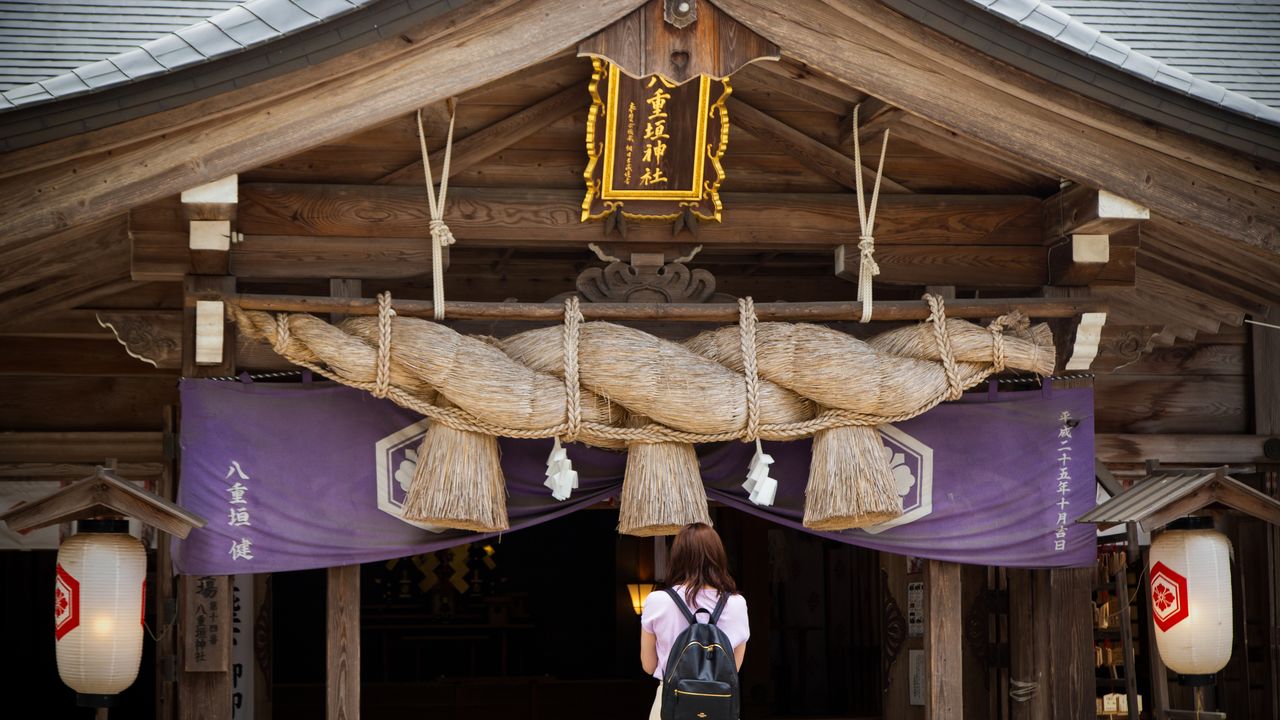
Yaegaki Shrine: A Legendary Site in Matsue for Seekers of Love
Guideto Japan
Travel- English
- 日本語
- 简体字
- 繁體字
- Français
- Español
- العربية
- Русский
The history of Yaegaki Shrine in Matsue, Shimane Prefecture, stretches back to mythical times. Legend says that Susanoo-no-mikoto, brother of the sun goddess Amatarasu-ōmikami, descended from heaven and slew the Yamata no Orochi, a fierce eight-headed and eight-tailed dragon that was terrorizing the land. The lovely princess Inata Hime was to be sacrificed to the beast, but Susanoo built an eight-layer fence around a giant cedar tree to hide her. After defeating the dragon, he took the princess as his bride.
In his joy, Susanoo is said to have composed a poem in the Japanese waka style. “The eight clouds stand, the eight-layer fence of Izumo,” goes the verse. “Those actively billowing clouds for an eight-layered fence to surround the palace in order to keep my wife safe, that magnificent ‘eight-layered’ fence of cloud.” (Translated by John W. Denney in Respect and Consideration.) The poem is considered Japan’s oldest waka, appearing in the Kojiki (Record of Ancient Matters) and Nihon Shoki (Chronicles of Japan), chronicles compiled in 712 and 720, respectively.
Yaegaki Shrine is purported to be where Susanoo built his eight-layer fence as well as his earthy residence.
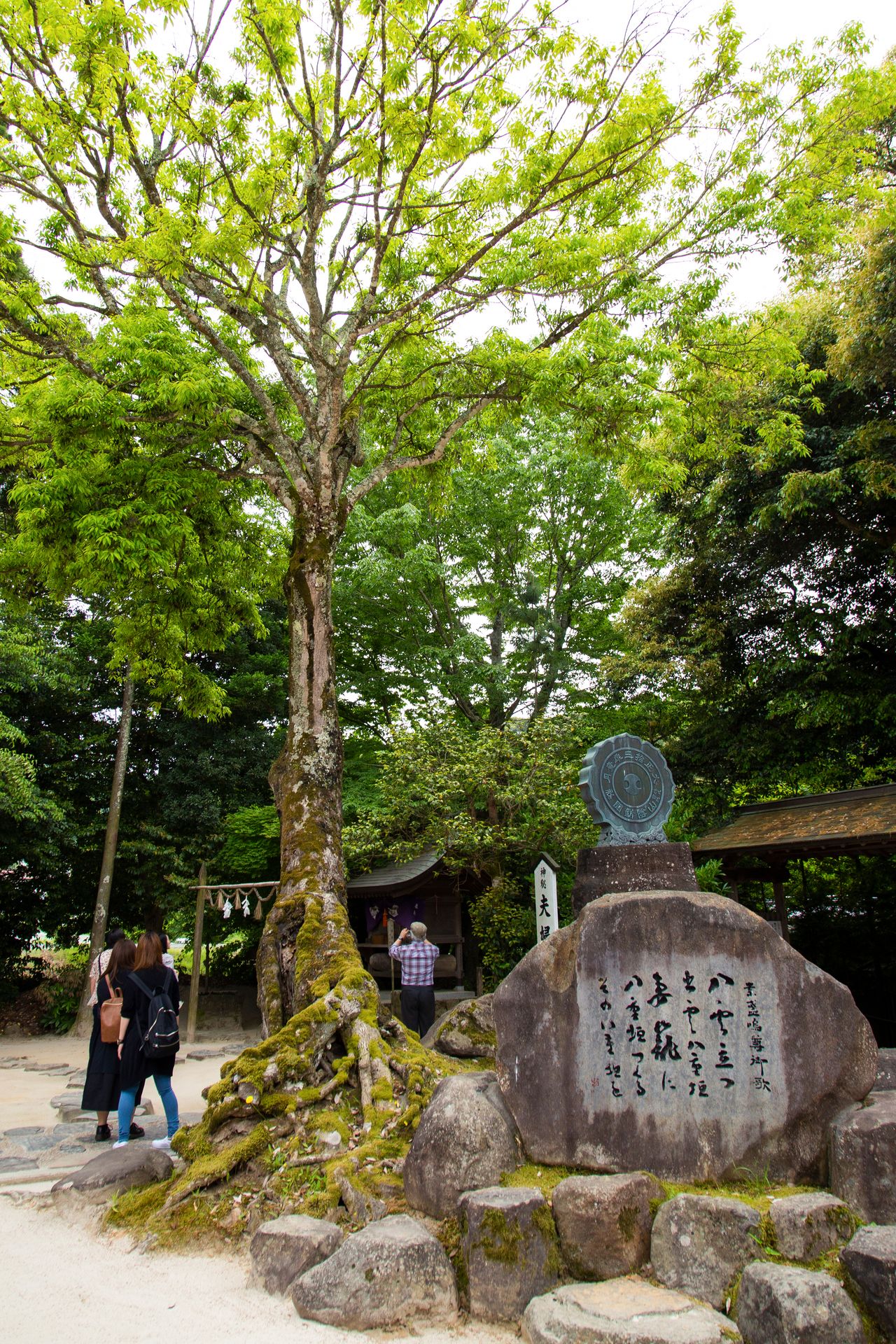
Susanoo’s famous poem is engraved on monument near the main shrine.
The writer Lafcadio Hearn (1850–1904), known for his collection of classic Japanese tales Kwaidan: Stories and Studies of Strange Things, lived in Matsue for some time. When he later became a naturalized Japanese citizen, he took the name Yakumo, a poetic reference to the famed “eight clouds” of his beloved Izumo province.
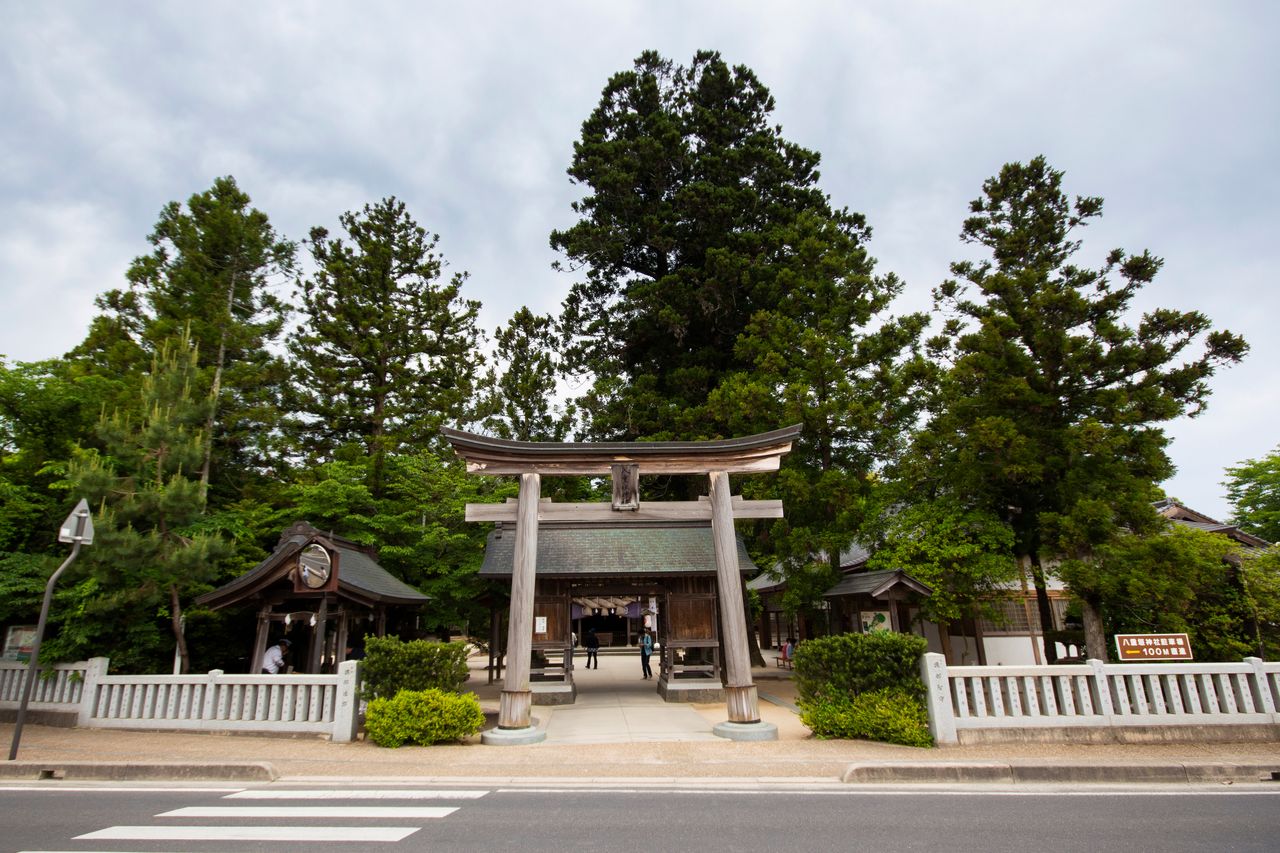
Zuishin Gate, the main entrance to the shrine, is visible beyond the torii.
The Mirror Pond: Foretelling Love’s Arrival
Yaegaki Shrine is dedicated to Susanoo and Inata Hime and is renowned for bringing good fortune in marriage. Behind the main hall of the shrine is the Sakusame no mori, a secluded grove where the eight-layer fence is supposed to have stood. Situated a short walk from the grove entrance is the Mirror Pond, a small pool that is believed to divine the timing of love’s arrival.

An sacred shimenawa rope adorns the main hall.
According to legend, while hiding from the Yamata no Orochi, Inata Hime drank from the pond and used its glass-like surface as a mirror. The princess’s spirit is now believed to dwell in the pond, imparting the water with powers of divination.

Entrance to the sacred grove Sakusame no mori.
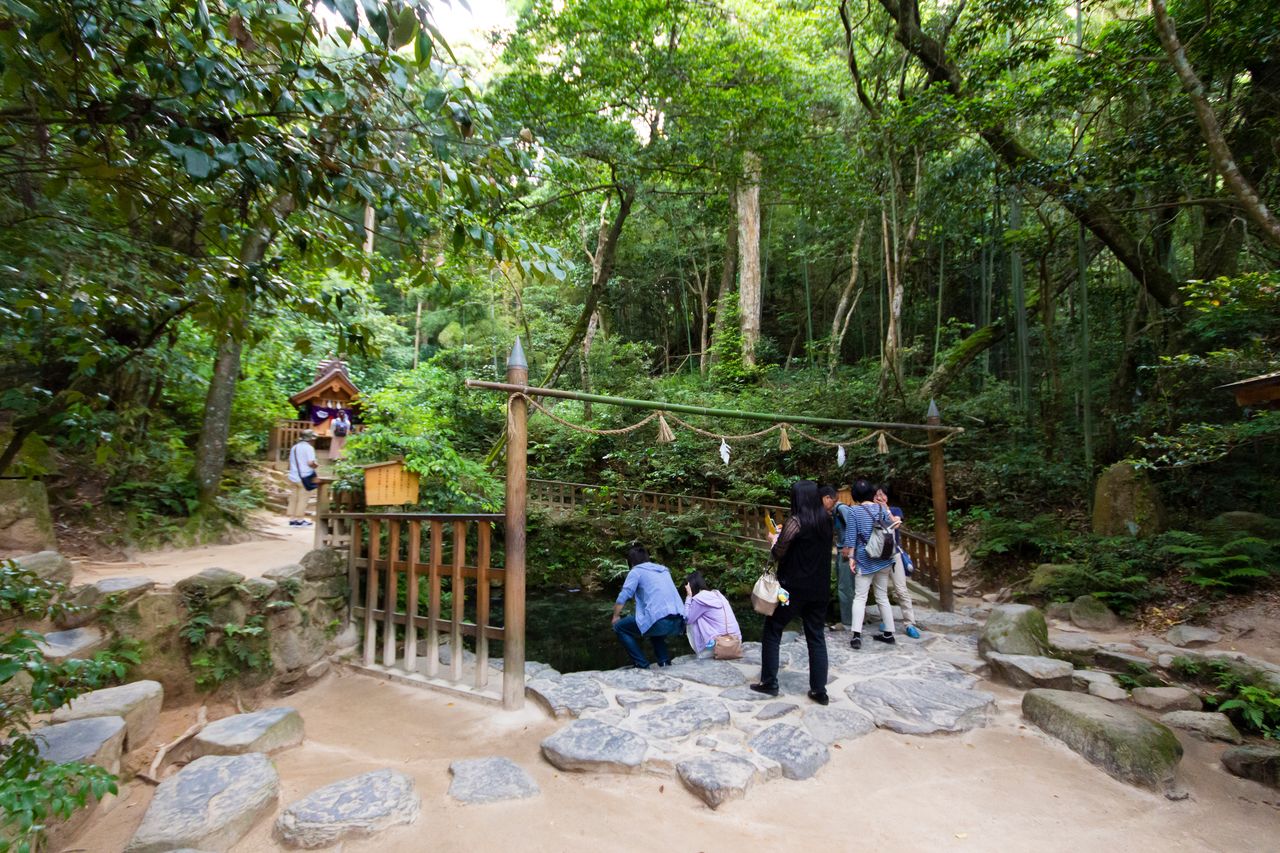
Visitors gather at the Mirror Pond. Behind the pool lies Amenokagami Shrine.
Visitors curious about their relationship prospects can purchase fortune-telling paper for ¥100 from the shrine office. To predict love’s arrival, float the paper on the pond and place a coin on top. If the paper sinks within 15 minutes, love is just around the corner. However, if it takes more than 30 minutes, love will take longer to appear. Proximity is also important, and if the paper sinks nearby, the prospective lover is someone close to the inquirer, whereas if it floats far away before sinking, the lover will be someone more distant.
The pond is also thought to predict the fortunes of visitors concerned with exams, job hunting, and business prospects. The pond attracts all manner of people who watch their fortune paper in earnest, hoping it will sink quickly.
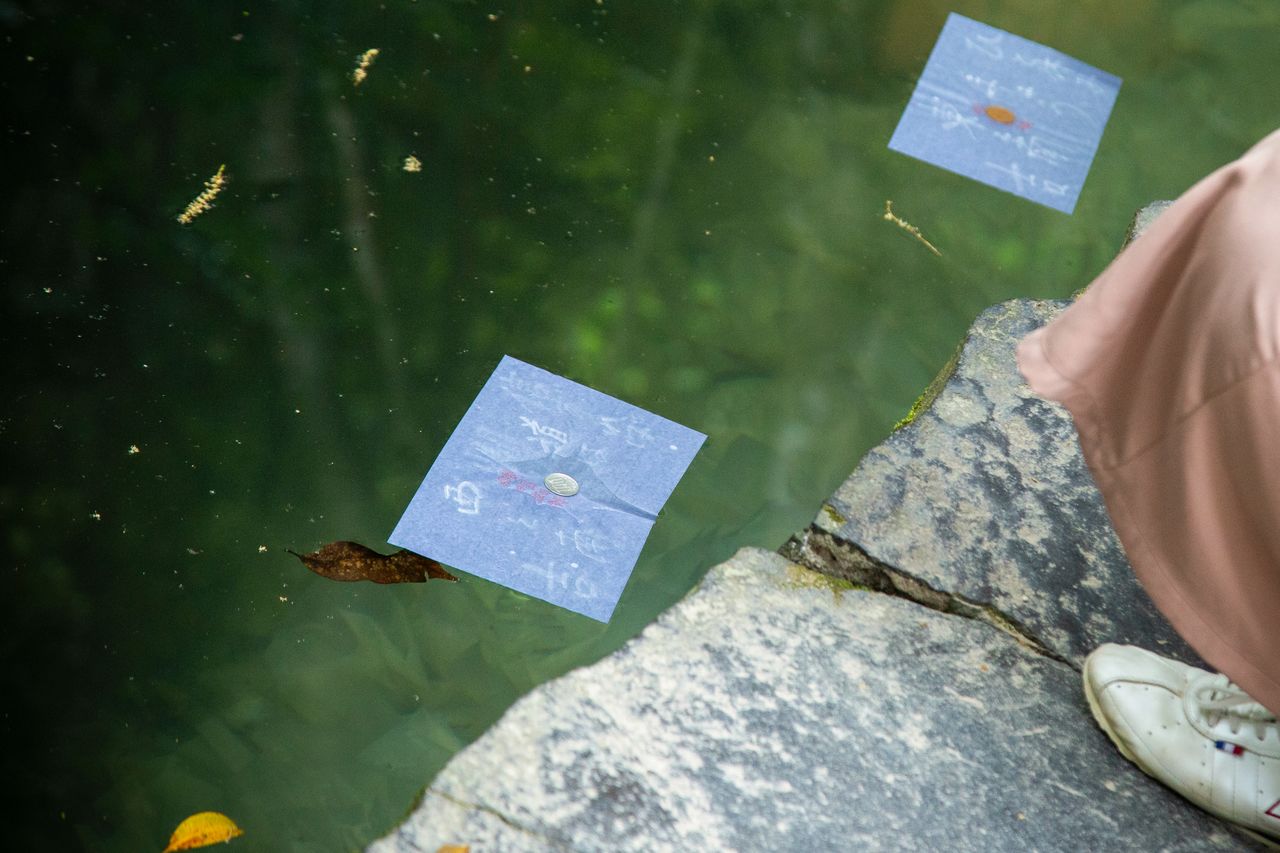
Visitors place either a ¥10 or ¥100 coin on their fortune-telling paper.
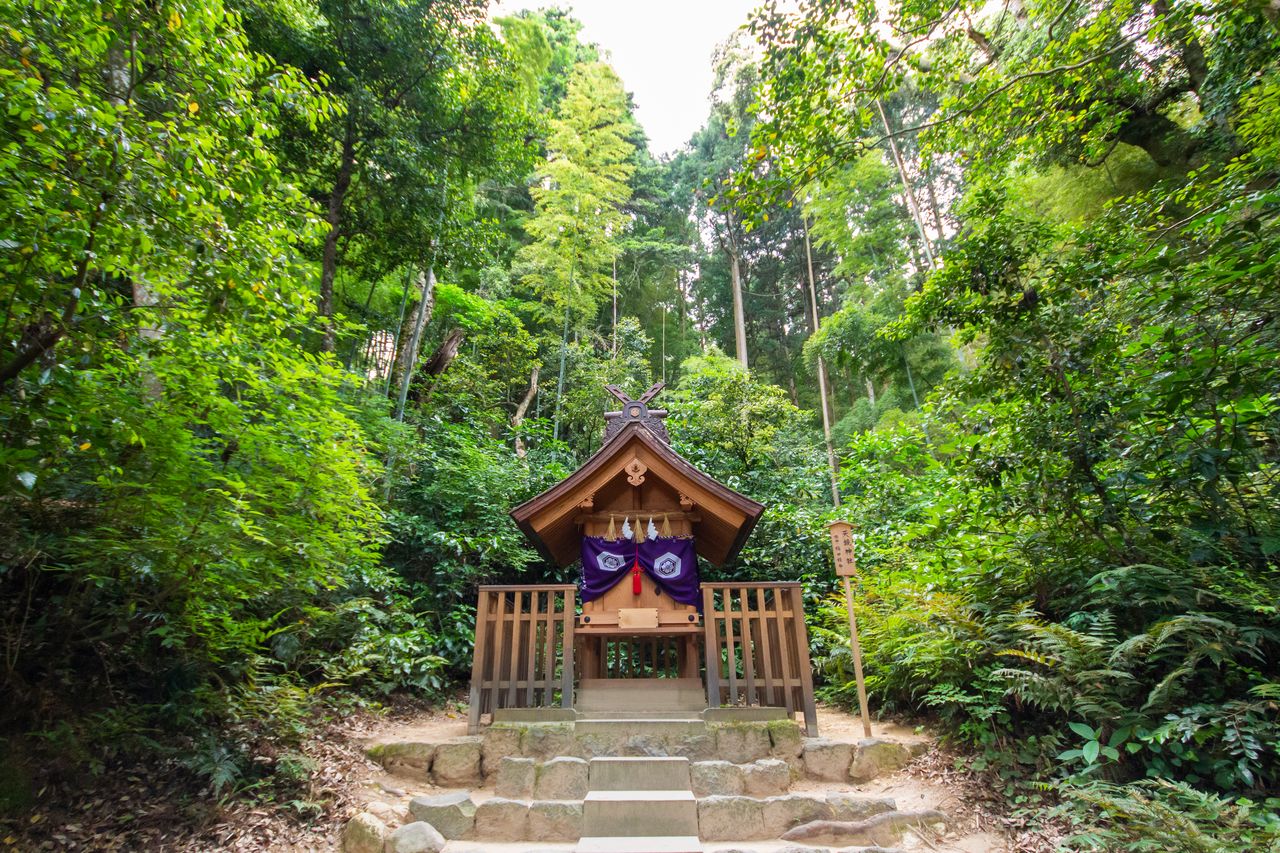
Amenokagami Shrine, dedicated to Inata Hime, watches over the pond and its visitors.
Pairs of camellia that have grown together into a single tree can be found in three locations on the shrine grounds. Known as husband-and-wife camellias, the plants are revered symbols of matrimonial love.
Other landmarks include a three-paneled wall painting on display at the treasure repository that is designated an important national cultural property, and the shrine’s komainu, fierce guardian lion-dogs carved from stone.
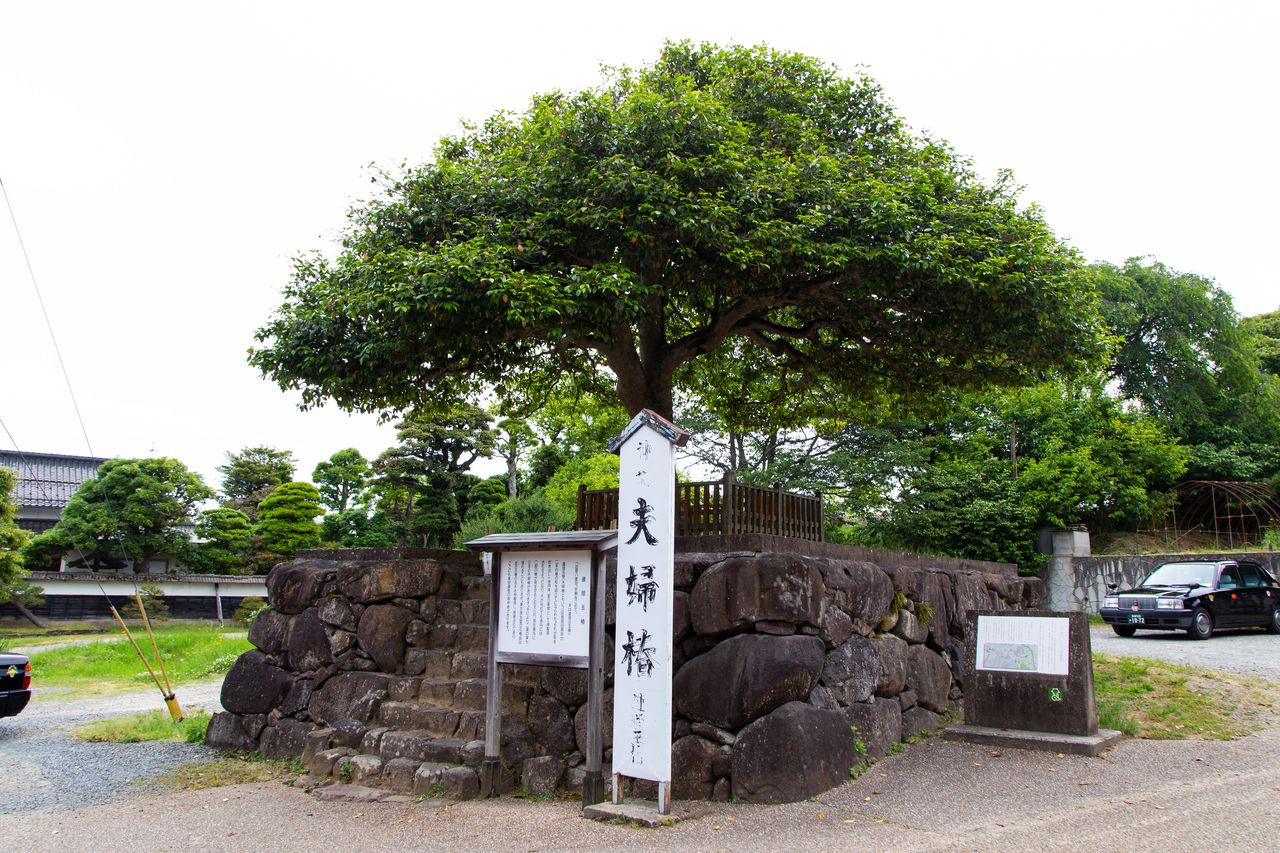
A husband-and-wife camellia grows on a stone wall.
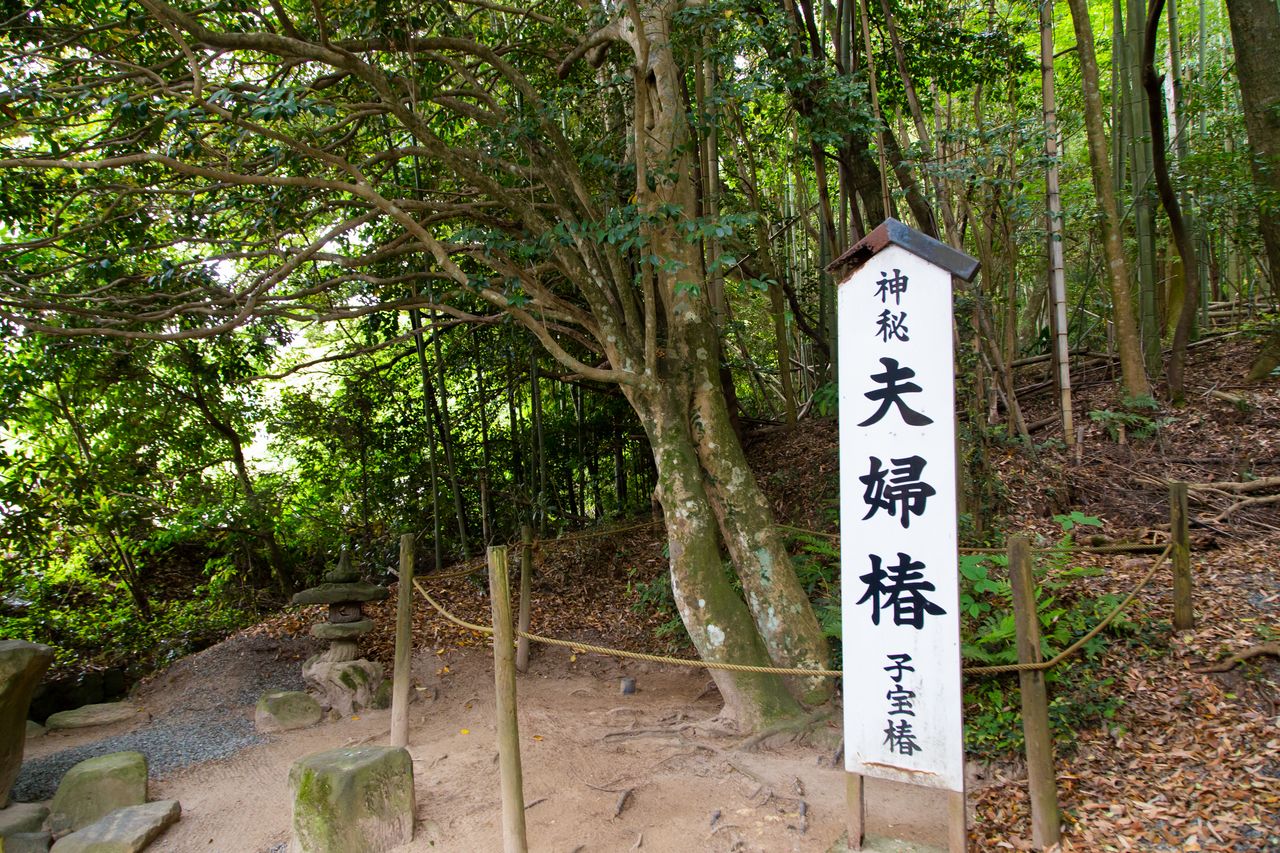
A husband-and-wife camellia growing in Sakusame no mori.
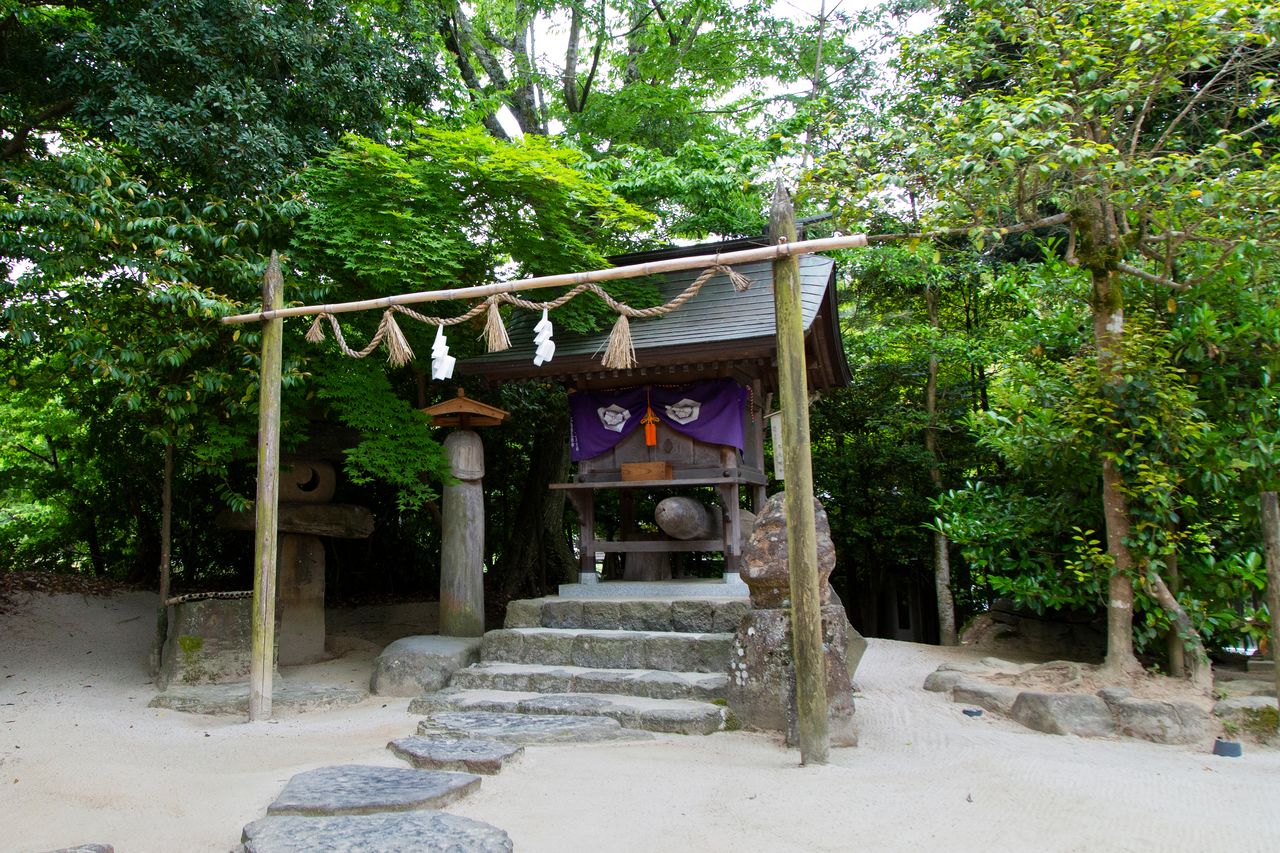
Otome tsubaki is a husband-and-wife camellia with split roots that grows next to Yamagami Shrine.
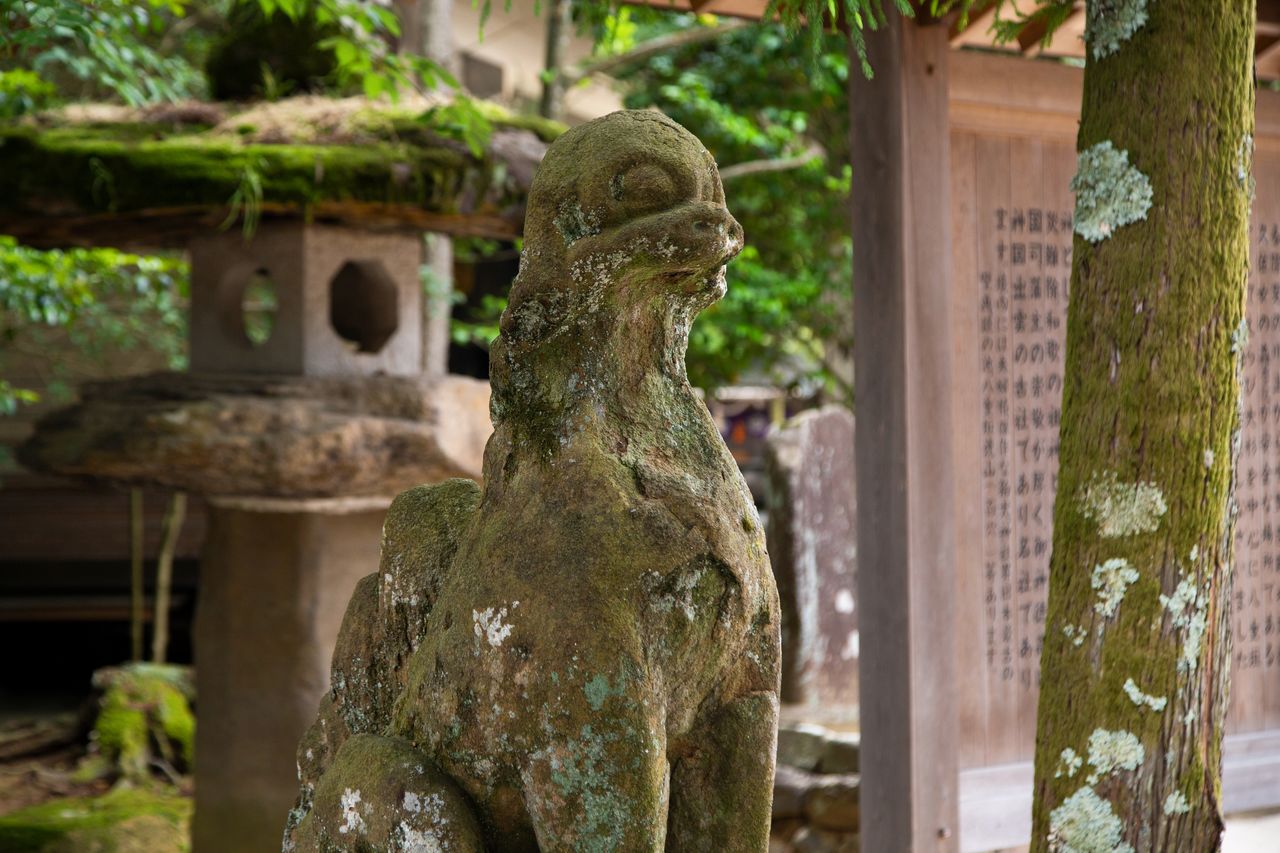
A guardian lion-dog carved from Matsue’s renowned Kimachi tuffaceous sandstone.
Yaegaki Shrine
- Address: 227 Sakusachō, Matsue, Shimane Prefecture
- Getting there: 20-minute bus ride from JR Matsue Station
- Hōmotsu Shūzōko treasure repository: Junior high school age and above ¥200, elementary school students ¥100
Visiting the Heart of Izumo’s Ancient Culture
A trip to Yaegaki Shrine should be followed by a visit to Kamosu Shrine, which sets one and a half kilometers away in Ōbachō at the end of a dedicated walkway. A stroll eastwards along this path offers views of burial mounds across the fields, and the route itself is lined with replicas of haniwa, ancient ceramic statues representing horses and deer. In the peaceful surroundings, visitors may find their thoughts drift off to ancient Izumo.
The chief deity of Kamosu Shrine is Izanami-no-mikoto, mother of Susanoo. The main shrine is Japan’s oldest example of the taisha-style of architecture and is designated a national treasure. Although the year of its construction is unknown, the building is considered the center of ancient Izumo culture and is intimately connected with the Izumo no kuni no miyatsuko, an ancient lineage of hereditary officials that claimed divine ancestry through the deity Ame-no-hohi-no-mikoto.

Charming, roughly-hewn stone stairs on the approach to Kamosu Shrine.
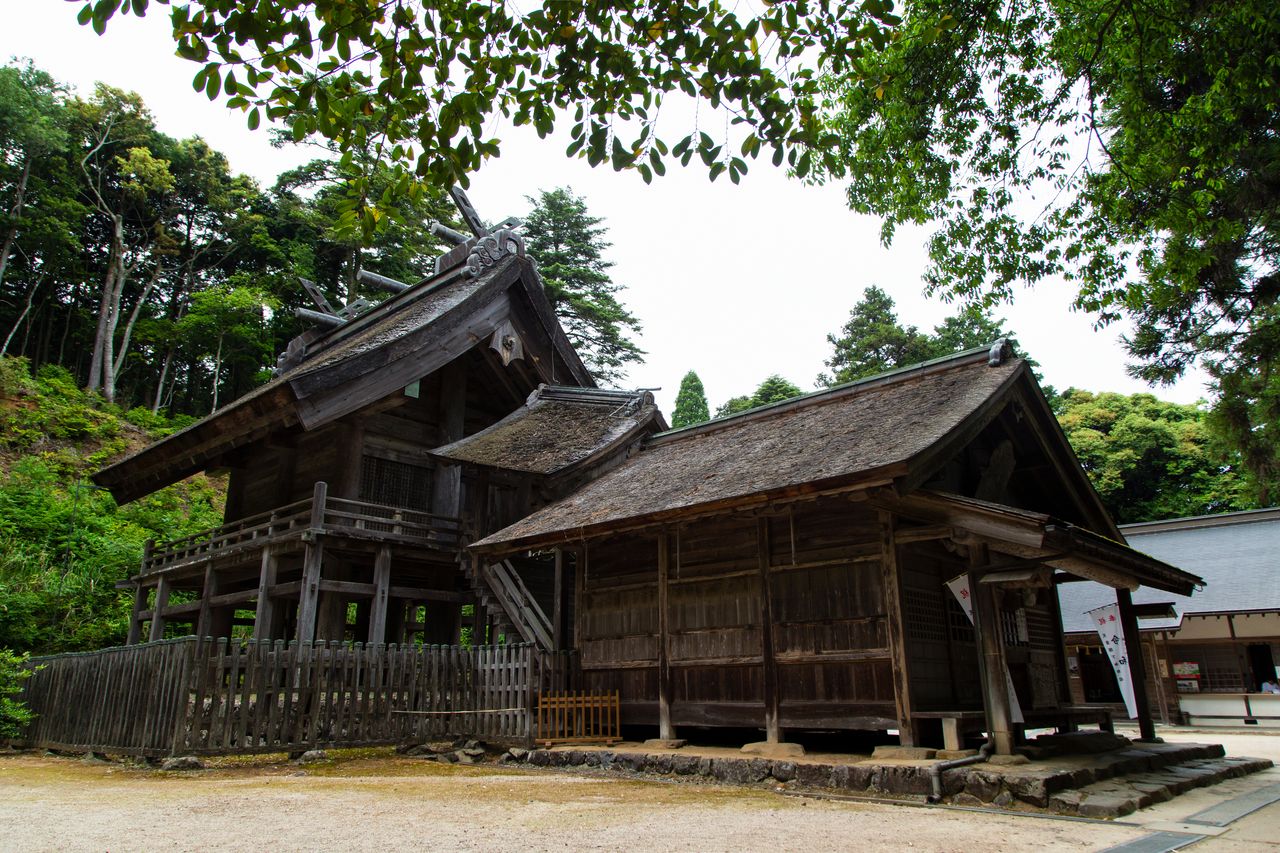
The taisha-style main hall has been designated a national treasure.
The Ōba and Takeya districts, northeast of Kamosu Shrine, are dotted with burial mounds constructed between the fourth and seventh centuries and the ruins of Izumo governmental and religious sites dating from the Nara (710–94) and Heian periods (794–1185). The museum Yakumotatsu Fudoki no Oka is a 10-minute walk east of Kamosu Shrine, that displays important cultural properties like haniwa figurines, swords excavated in the area, and a copy of Izumo no kuni fudoki, an ancient record dating from 733. There are other educational exhibits at the site, including the Okadayama Kofun tumuli and the Fudoki Botanical Garden, which features reconstructed ancient pit dwellings.
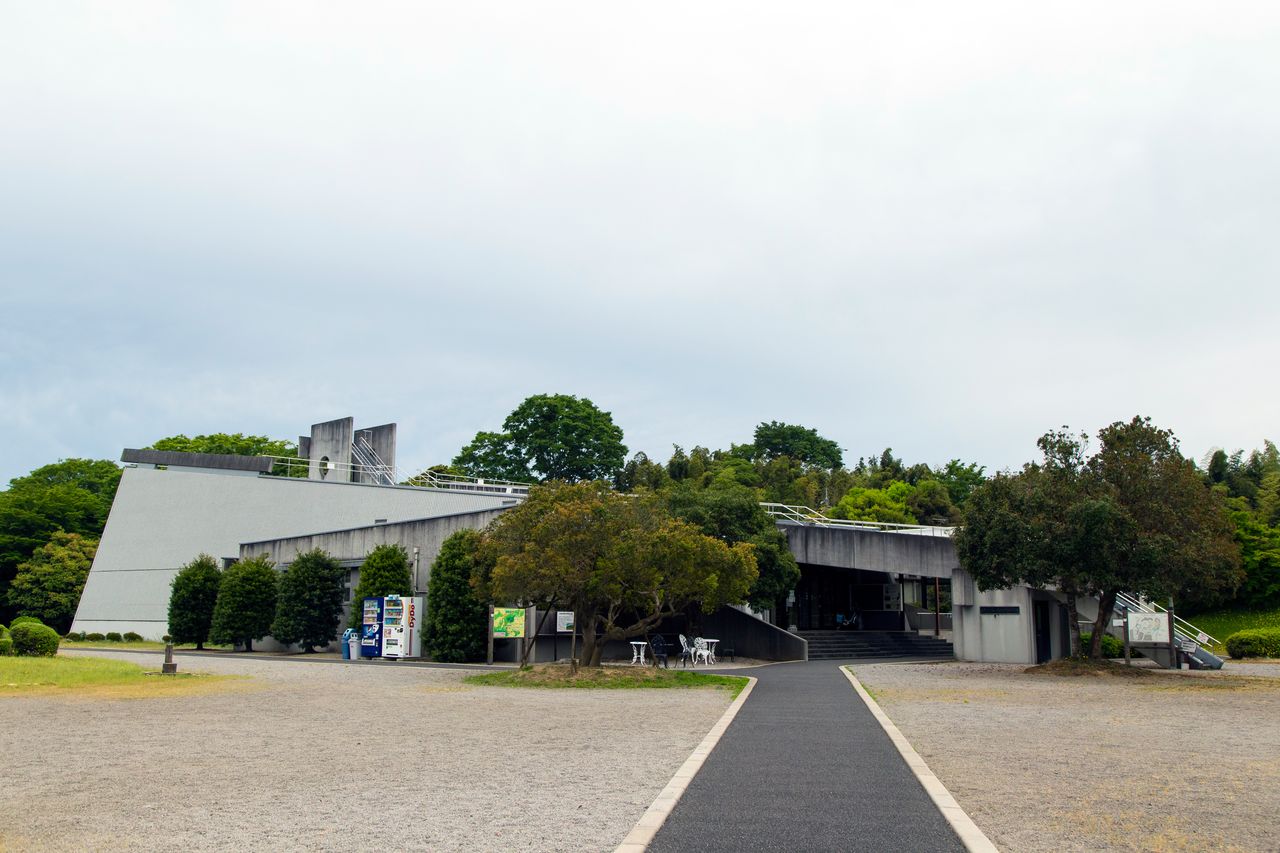
Yakumotatsu Fudoki no Oka museum is built in the shape of a conjoined-rectangle tumulus.
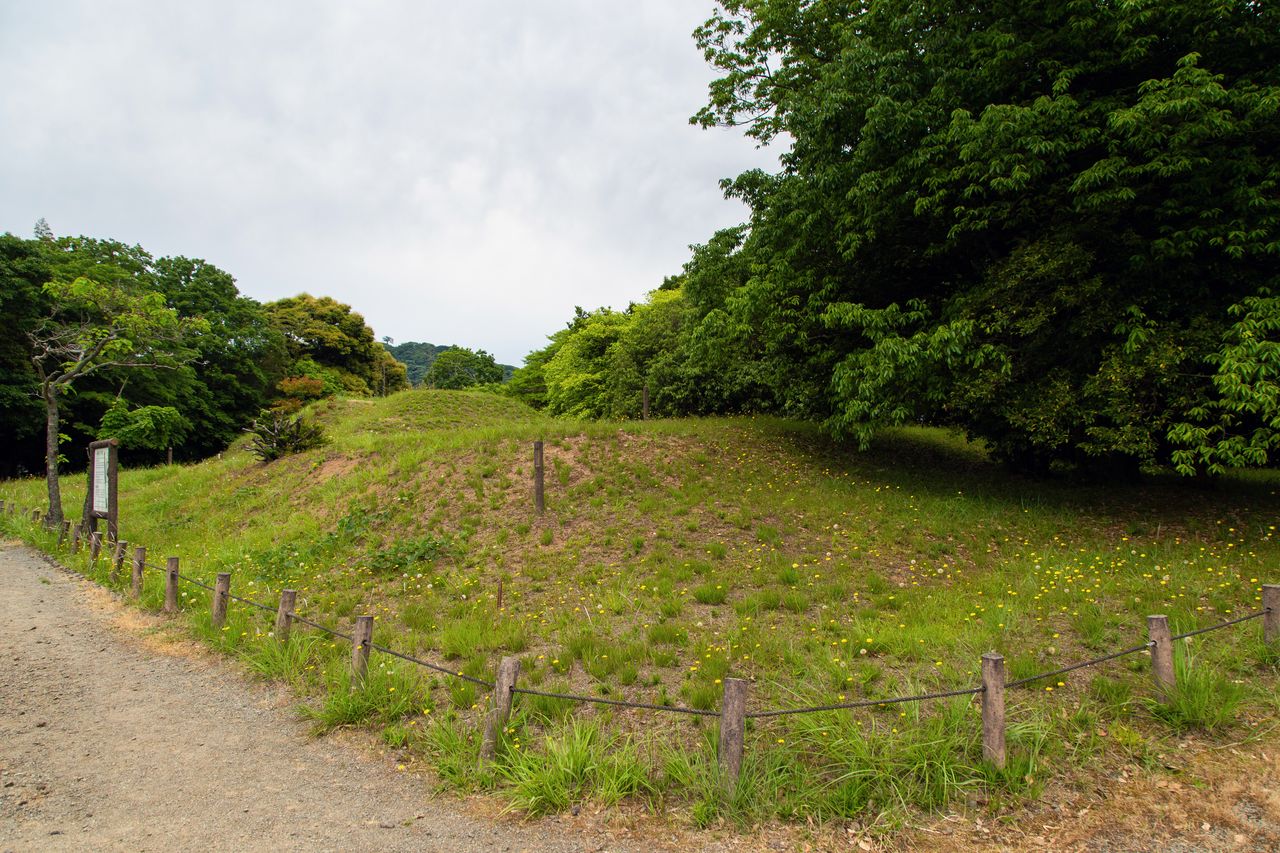
A burial mound at Yakumotatsu Fudoki no Oka. Many relics have been excavated in the area.
Kamosu Shrine
- Address: 563 Ōbachō, Matsue, Shimane Prefecture
- Getting there: 20 minutes from JR Matsue Station by city bus (3-minute walk from Kanbe no sato bus stop); 18 minutes from JR Matsue Station on the Ichibata Bus Yakumo line (10-minute walk from Fudoki no Oka iriguchi bus stop); or 20 minutes’ walk from Yaegaki Shrine
Yakumotatsu Fudoki no Oka
- Address: 456 Ōbachō, Matsue, Shimane Prefecture
- Hours: 9:00 am to 5:00 pm (last admission 4:30 pm)
- Closed Tuesdays (or Wednesdays if Tuesday is a public holiday) and December 29–January 1
- Admission: General ¥200, university students ¥100, free for high school age or younger. Discounts apply for groups and overseas tourists (upon presentation of passport). Admission fees are subject to change during special exhibitions.
- Getting there: 18 minutes from JR Matsue Station by city bus bound for Kanbe no Sato (get off at Fudoki no Oka), or 18 minutes from JR Matsue Station on the Ichibata Bus Yakumo line (2-minute walk from Fudoki no Oka iriguchi bus stop)
(Originally published in Japanese. Reporting, text, and photos by Nippon.com. Banner photo: The main shrine of Yaegaki Shrine.)